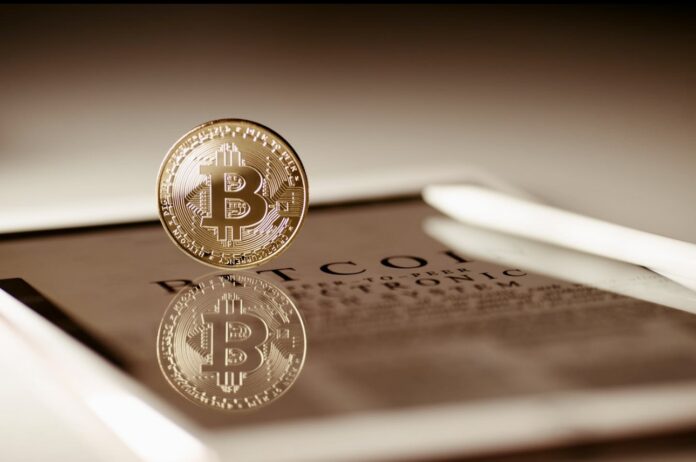Criptovalute come riserva di valore
Una delle principali argomentazioni a favore delle criptovalute è il loro potenziale come riserva di valore. Alcuni investitori vedono le criptovalute come una forma di “oro digitale”, un’alternativa ai tradizionali beni rifugio come l’oro o le obbligazioni. Questa prospettiva si basa sull’idea che le criptovalute siano deflazionarie per natura, con un’offerta limitata che può fungere da protezione contro l’inflazione e l’intervento dei governi. Tuttavia, altri sottolineano che le criptovalute sono ancora estremamente volatili e non hanno dimostrato di essere una riserva di valore affidabile nel lungo periodo.
L’impatto ambientale delle criptovalute
Un’altra preoccupazione che circonda le criptovalute è il loro impatto ambientale. Il processo di “mining” delle criptovalute, che coinvolge la risoluzione di complessi calcoli matematici per confermare le transazioni sulla blockchain, richiede enormi quantità di energia. Alcuni studi suggeriscono che il mining di Bitcoin da solo consumi più energia di intere nazioni come l’Argentina. Questo ha portato a critiche da parte di ambientalisti e attivisti che sostengono che le criptovalute stanno contribuendo al cambiamento climatico e alla distruzione dell’ambiente.
Bitcoin: La Rivoluzione Digitale della Valuta o Una Bolla Speculativa in Attesa di Scoppiare?
Da quando è emerso per la prima volta nel 2009, il Bitcoin ha catturato l’immaginazione del mondo finanziario e tecnologico come una delle innovazioni più rivoluzionarie del nostro tempo. Ma cos’è esattamente il Bitcoin e quale sarà il suo impatto sul futuro delle finanze globali? Questo articolo esplorerà il fenomeno del Bitcoin, esaminando sia le sue promesse che le sue sfide.
Introduzione al Bitcoin
Il Bitcoin è una criptovaluta decentralizzata, ossia una forma di denaro digitale che non è controllata da un’autorità centrale come una banca centrale o un governo. È basato su una tecnologia chiamata blockchain, che consente alle transazioni di essere registrate in modo sicuro e trasparente su una rete distribuita di computer. Ciò significa che il Bitcoin offre una forma di pagamento peer-to-peer senza intermediari.
Come Funziona il Bitcoin?
Le transazioni di Bitcoin avvengono tramite una rete peer-to-peer in cui i partecipanti possono inviare e ricevere pagamenti direttamente, senza la necessità di un intermediario finanziario. La blockchain registra ogni transazione in modo permanente e immutabile, garantendo la sicurezza e l’integrità del sistema. Inoltre, il Bitcoin è programmato per avere un’offerta massima di 21 milioni di monete, rendendolo un bene deflazionistico.

Bitcoin come Investimento e Mezzo di Scambio
Molte persone vedono il Bitcoin non solo come una forma di denaro, ma anche come un’opportunità di investimento. Nel corso degli anni, il valore del Bitcoin è aumentato in modo significativo, attirando l’interesse degli investitori che sperano di ottenere profitti dalle fluttuazioni dei prezzi. Allo stesso tempo, ci sono crescenti adozioni del Bitcoin come mezzo di pagamento in vari settori, dalle aziende che accettano pagamenti in Bitcoin ai servizi finanziari che offrono prodotti e servizi basati su criptovalute.
Critiche e Sfide
Nonostante il suo crescente successo, il Bitcoin non è privo di critiche e sfide. Alcuni osservatori avvertono che il Bitcoin potrebbe essere una bolla speculativa destinata a scoppiare, con il rischio di perdite significative per gli investitori. Inoltre, ci sono preoccupazioni riguardo alla sua volatilità, alla sua scalabilità e al suo impatto ambientale, dato il consumo energetico associato al mining di Bitcoin.
Il Futuro del Bitcoin
Nonostante le critiche e le sfide, il Bitcoin continua a guadagnare popolarità e adozione in tutto il mondo. Molti credono che possa rappresentare il futuro delle finanze globali, offrendo una forma di denaro digitale sicura, privata e decentralizzata. Tuttavia, rimangono domande aperte su come il Bitcoin si evolverà nel tempo e se sarà in grado di superare le sue sfide attuali.
In conclusione, il Bitcoin rappresenta una delle più grandi innovazioni nel mondo delle finanze e della tecnologia degli ultimi anni. Mentre continua a suscitare entusiasmo e interesse, è importante valutare attentamente i suoi vantaggi e le sue limitazioni, così come le implicazioni a lungo termine del suo utilizzo e della sua adozione su scala globale.
L’evoluzione delle criptovalute
Nonostante le sfide e le critiche, il settore delle criptovalute continua a evolversi e a crescere. Nuove tecnologie e innovazioni come la DeFi (finanza decentralizzata) e i NFT (token non fungibili) stanno spingendo i confini delle criptovalute e aprendo nuove opportunità per gli investitori e gli utenti. La DeFi, ad esempio, offre la possibilità di accedere a una vasta gamma di servizi finanziari senza la necessità di intermediari tradizionali come le banche. Gli NFT, d’altra parte, stanno rivoluzionando il settore dell’arte e dell’intrattenimento, consentendo agli artisti di monetizzare il loro lavoro in modi completamente nuovi.

Il Fenomeno degli NFT: Rivoluzione Digitale o Bolla Speculativa?
NFT, acronimo di “Non-Fungible Token”, ha catturato l’attenzione del mondo digitale e finanziario come una delle tendenze più discusse e dibattute degli ultimi anni. Ma cosa sono esattamente gli NFT e cosa li rende così speciali? Si tratta di una rivoluzione nell’arte e nella tecnologia digitale, o semplicemente di una bolla speculativa destinata a scoppiare?
Cos’è un NFT?
In termini semplici, un NFT è un tipo di token crittografico unico che rappresenta un asset digitale, come ad esempio un’opera d’arte digitale, un video, un brano musicale o persino un tweet. Ciò che distingue gli NFT dagli altri tipi di token crittografici è la loro non fungibilità, il che significa che ciascun token è unico e non può essere sostituito con un altro di uguale valore.
Come Funzionano gli NFT?
Gli NFT si basano sulla tecnologia blockchain, che consente di registrare in modo sicuro e trasparente la proprietà e la provenienza di un asset digitale. Utilizzando contratti intelligenti, gli NFT possono anche includere specifiche condizioni o regole per il loro utilizzo e trasferimento. Ciò significa che gli artisti possono garantire diritti d’autore e guadagnare royalties ogni volta che il loro NFT viene rivenduto.
L’Ascesa degli NFT nell’Arte e nella Cultura Pop
Uno dei settori che ha visto una maggiore adozione degli NFT è stato l’arte digitale. Artisti di tutto il mondo stanno creando e vendendo opere d’arte digitali come NFT, sfruttando la possibilità di guadagnare dai diritti d’autore e di raggiungere una nuova base di fan e collezionisti. Questo ha portato a transazioni milionarie, con alcune opere d’arte digitale che sono state vendute per cifre astronomiche.
Critiche e Preoccupazioni
Nonostante l’entusiasmo intorno agli NFT, ci sono anche voci critiche che sollevano preoccupazioni riguardo a questa nuova forma di asset digitale. Alcuni critici sottolineano l’impatto ambientale dell’estrazione di criptovalute utilizzate per acquistare e scambiare NFT, mentre altri temono che la mania degli NFT sia una bolla speculativa destinata a crollare, lasciando molti investitori con perdite significative.

Il Futuro degli NFT
Nonostante le critiche e le incertezze, gli NFT continuano a suscitare interesse e attenzione da parte di artisti, collezionisti, investitori e appassionati di tecnologia. Molti credono che gli NFT possano rappresentare il futuro dell’arte digitale e della proprietà digitale in generale, offrendo nuove opportunità per gli artisti e una maggiore trasparenza e sicurezza per i collezionisti.
Tuttavia, resta da vedere se gli NFT manterranno il loro valore nel lungo periodo o se si riveleranno semplicemente una moda passeggera. In ogni caso, il fenomeno degli NFT rimane uno dei più interessanti e dibattuti sviluppi nel mondo digitale e finanziario degli ultimi anni. Le criptovalute rappresentano una delle più grandi innovazioni del mondo finanziario, con il potenziale per trasformare radicalmente il modo in cui facciamo affari, investiamo e interagiamo con il denaro. Tuttavia, rimangono ancora molte domande senza risposta e molte sfide da affrontare prima che le criptovalute possano realizzare pienamente il loro potenziale. Sia che si tratti di una rivoluzione digitale o di una bolla speculativa, solo il tempo lo dirà. Tuttavia, una cosa è certa: le criptovalute continueranno a essere un argomento di discussione e di interesse per molto tempo a venire.
Ig – @fairness_mag




